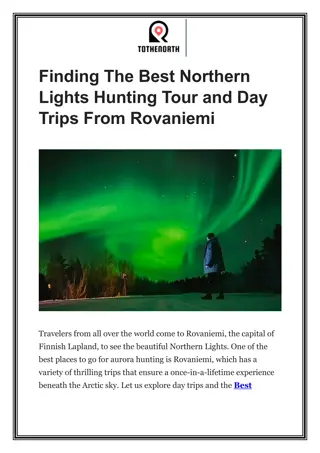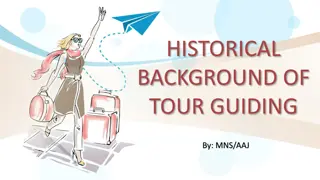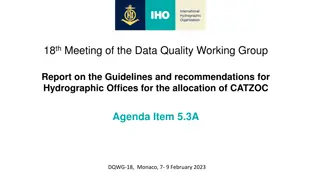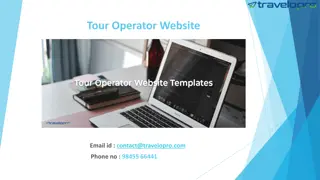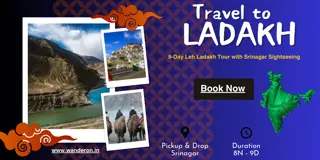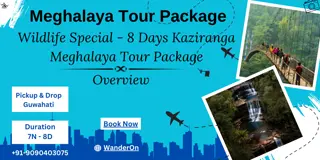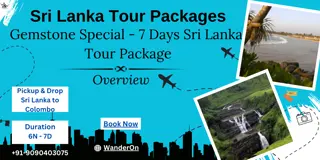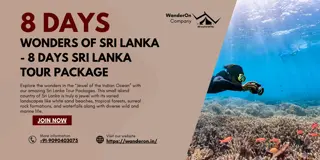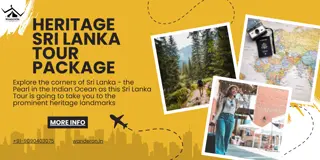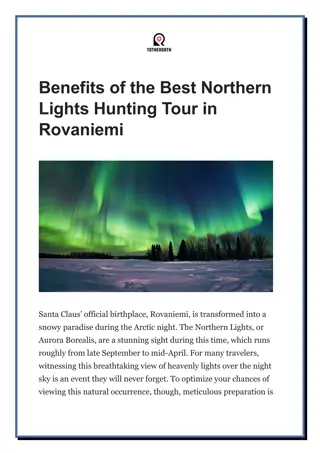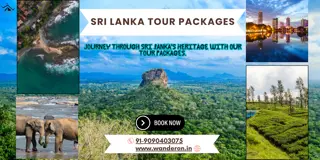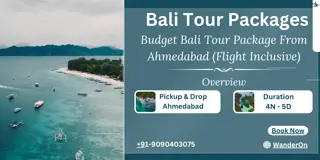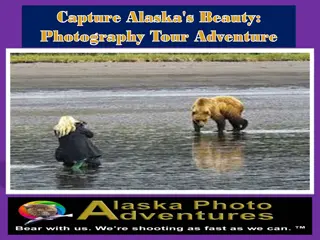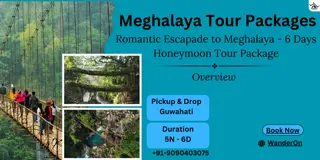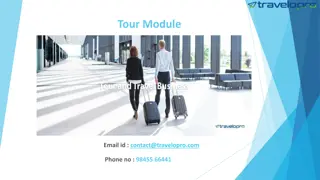ALLOCATE TOUR RESOURCES
Explore the process of allocating tour resources, including determining requirements, resource allocation, and reviewing. Assessment methods include oral and written questions, projects, and workplace observation. Learn about identifying factors for resource needs and ways to acquire resources for tours.
Download Presentation

Please find below an Image/Link to download the presentation.
The content on the website is provided AS IS for your information and personal use only. It may not be sold, licensed, or shared on other websites without obtaining consent from the author.If you encounter any issues during the download, it is possible that the publisher has removed the file from their server.
You are allowed to download the files provided on this website for personal or commercial use, subject to the condition that they are used lawfully. All files are the property of their respective owners.
The content on the website is provided AS IS for your information and personal use only. It may not be sold, licensed, or shared on other websites without obtaining consent from the author.
E N D
Presentation Transcript
ALLOCATE TOUR RESOURCES D2.TTG.CL3.02 D2.TTO.CL4.01 Slide 1
Allocate tour resources This Unit comprises three Elements: 1. Determine resource requirements 2. Allocate resources 3. Review resource allocation. Slide 2
Assessment Assessment for this unit might include: Oral questions Written questions Work projects Workplace observation of practical skills Practical exercises Formal report from employer/supervisor. Slide 3
Element 1 Determine resource requirements Performance Criteria for this Element are: Identify factors to determine resource requirements for a tour Discuss resource needs with colleagues Consider previous tours that have been conducted Identify safety and legal issues that must be complied with Determine availability of required resources Identify specific resources for individual tours Prepare short-/long-term plans for resource acquisition. Slide 4
Identify factors that will determine resource requirements for a tour Types/classifications of resources required: Physical Financial Human Information. Slide 5
Identify factors that will determine resource requirements for a tour Ways to identify resources required: Research/read tour brochures and promotional materials Review tour contracts Talk to others Read tour reports Refer to resourcing sheets Read customer feedback Use common sense. Slide 6
Identify factors that will determine resource requirements for a tour Factors that will determine resource requirements for a tour might be related to: Type of tour Location of tour Duration of tour Start and finish times (Continued) Slide 7
Identify factors that will determine resource requirements for a tour Size of tour group Special needs and special requests Types of customers expected (Continued) Slide 8
Identify factors that will determine resource requirements for a tour External resources available Tour conditions Things advertised as happening/being provided on tour. Slide 9
Discuss resource needs with colleagues Can be a need to talk to: Management Administration Staff who have been on tour. Slide 10
Discuss resource needs with colleagues Reasons to talk with management: Get benefit of their knowledge Find out their expectations Identify joint-venture arrangements which apply Determine special requirements/requests Know how they see the tour fitting with the business Find out their thoughts on resourcing Obtain authorisations/approvals. Slide 11
Discuss resource needs with colleagues Reasons to talk with administration to: Capture data/figures relation to previous similar tours Identify human resources available for the tour Determine operational/working parameters for the tour Obtain budget data Determine paperwork/documentation that needs to be completed in relation to capturing required resource allocation and usage for the tour Assist with optimising use of limited resources. Slide 12
Discuss resource needs with colleagues Reasons to talk with other staff to: Obtain their advice about what is needed Learn lessons they have learned Identify/confirm resources being prepared or allocated Gain a better feeling for the requirements of the tour Ensure items not listed on internal checklists but required are addressed. Slide 13
Discuss resource needs with colleagues Topics for discussion: Analysing operational issues Considering how lack of resources impacts the tour and the tour group members Identifying emerging resource needs. Slide 14
Consider previous tours that have been conducted This aspect of the process should involve: Obtaining relevant data and documents Drilling down into facts and figures to extract information relevant to the tour. Slide 15
Consider previous tours that have been conducted Things to consider: Tour statistics: Tour numbers Demographics Special requests made Inclusions Duration Itineraries (Continued) Slide 16
Consider previous tours that have been conducted Analysis of feedback: Evaluations from staff Tour group member feedback Contributions from strategic partners (Continued) Slide 17
Consider previous tours that have been conducted Investigating reportable events : Accidents Incidents Near misses. Slide 18
Consider previous tours that have been conducted Reasons to do this research: Gain a frame of reference for comparison purposes Obtain actual examples of resources previously used Get ideas from staff about suitability and sufficiency of resources. Slide 19
Identify safety and legal issues that must be complied with Duty of Care all businesses must: Create an environment which does not pose a risk Take action to avoid causing foreseeable harm. Slide 20
Identify safety and legal issues that must be complied with If tour operator breaches Duty of Care: They might be sued for negligence Successful cases result in Damages being awarded. Slide 21
Identify safety and legal issues that must be complied with Ways to identify safety and legal issues: Talk to management Seek advice from Government agencies Search the Web Ask industry bodies Speak with staff in other tour businesses Read tour advertising Undertake formal risk management. Slide 22
Identify safety and legal issues that must be complied with Risk management formal procedure comprising: Risk identification Risk analysis and assessment Risk management. Slide 23
Identify safety and legal issues that must be complied with SOP is all staff and tours must comply with: Relevant Tourist Guide legislation/requirements Host country laws Laws of countries visited by the tour Legislation applicable to activities/inclusions. Slide 24
Identify safety and legal issues that must be complied with Important to note: Employers might be vicariously liable for their staff Staff do not have a legal defence if they break the law and say My boss told me to! . Slide 25
Identify safety and legal issues that must be complied with In general terms there is a need to: Ensure vehicles are safe/roadworthy Make sure drivers are properly licensed Provide all necessary PPE Produce and provide necessary safety information (Continued) Slide 26
Identify safety and legal issues that must be complied with Develop and resource Emergency Management Plans Provide lights for night tours Provide support systems and technologies Supply First Aid kit. Slide 27
Determine availability of required resources Ways to determine resource availability for an upcoming tour: Identify items readily/currently available Review tour schedule Review orders placed with suppliers (Continued) Slide 28
Determine availability of required resources Review third party suppliers used Review items which are out- of-operation Review rosters (for human resources) Check budgets. Slide 29
Identify specific resources for individual tours One-off tours: Have unique requirements Will have their requirements determined with reference to the contract and through discussions with the host/group Will require inferences to be drawn about resources required from known tour details (itinerary, dates, destinations, inclusions). Slide 30
Identify specific resources for individual tours Regular tours can have individual need based on: Weather Time of day Special needs/requests Changes to routes and/or inclusions. Slide 31
Identify specific resources for individual tours Physical resource variations can relate to: Vehicles and vessels Camping gear Catering equipment Food and beverages Safety gear Rec. and activity equipment (Continued) Slide 32
Identify specific resources for individual tours Maintenance equipment Educational resources Cash Vouchers. Slide 33
Identify specific resources for individual tours Always list these resources by: Type Quantity Value Location. Slide 34
Identify specific resources for individual tours Process of identifying human resources means: Naming staff to be used Determining roles and responsibilities Verifying hours to be worked. Slide 35
Identify specific resources for individual tours Human resources might include: Drivers Tourist Guides and Tour Leaders Driver Guides Hosts/hostesses Activity leaders Cooks Interpreters Camp assistants and Tour assistants. Slide 36
Identify specific resources for individual tours Human resources need to be described by: Classification Number Hours Projected wages/labour cost. Slide 37
Prepare short- and long-term plans for resource acquisition Exclusion Clauses commonly address Tour Operator can; Change itinerary Alter transport Sub-contract services Substitute activities, accommodation or catering Specify no refund/discount payable if changes are made. Slide 38
Prepare short- and long-term plans for resource acquisition Where changes need to be made it is important to: See things from the customer s perspective Ensure comparative value-for- money. Slide 39
Prepare short- and long-term plans for resource acquisition Where changes are required possible action includes: Advise tour group members and explain reason Apologise Make a substitute Change itinerary Offer products/services by way of apology. Slide 40
Prepare short- and long-term plans for resource acquisition Short-term plans might include: Impose a short delay to departure Move resources from one place to another Obtain items in immediate short-term Contact and seek help from destinations and attractions Relying on Terms and Conditions. Slide 41
Prepare short- and long-term plans for resource acquisition Long-term plans might include: Acquire/purchase extra items Service items Amend standard tours Develop new tours. Slide 42
Summary Element 1 When determining resource requirements: Understand the different type of resources required physical, financial, human and informational Identify the classifications within each resource type Talk to others to get their input about what is required and what is used (Continued) Slide 43
Summary Element 1 Read the materials published/issues by the tour company to help determine what is used/needed Use common sense Factor in tour types, duration, destinations, frequency, tour schedules and tour group size Take special requests into account (Continued) Slide 44
Summary Element 1 Analyse previous and current use Make safety a constant standard/requirement when determining resource allocations Comply with any legally- imposed obligations regarding resources required (Continued) Slide 45
Summary Element 1 Calculate resources required rather than guess what is needed Plan/prepare to meet future identified resource requirements Read the Exclusion clauses the tour company has included in its Terms and Conditions . Slide 46
Element 2 Allocate resources Performance Criteria for this Element are: Coordinate the availability of physical resources Match resources to identified tour requirements Comply with budget limitations when allocating resources Provide resource information and support to colleagues (Continued) Slide 47
Element 2 Allocate resources Performance Criteria for this Element are: Issue the identified physical resources as identified Distribute physical resources to required locations Arrange for third party supply of resources Verify supply of appropriate and adequate resources with tour guide and other personnel. Slide 48
Coordinate the availability of physical resources Factors impacting resources available for upcoming tours: Other tours currently being conducted at the time Level of physical stock-on- hand Tour schedules (Continued) Slide 49
Coordinate the availability of physical resources Cleaning requirements Servicing and maintenance requirements Staff development activities. Slide 50



